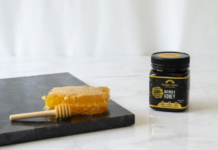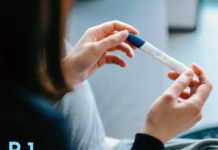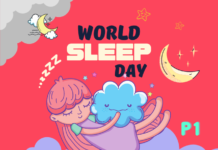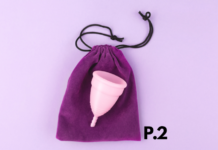As a new parent, one of your top priorities is ensuring the health and safety of your baby. Keeping everything clean and sanitized becomes a daily ritual, with baby bottles often at the center of this routine.
We’ll also provide practical tips for cleaning and storing baby bottles, ensuring that you have all the information you need to make informed decisions.
Plus, we’ll share some valuable insights on baby formula alternatives, breast pumps, and must-have items for your baby registry.
Why is it important to sterilize baby bottles?
Understanding the immune system of newborns
Babies under 3 months old are still developing their immune system. This means that they are particularly vulnerable to infections during this critical period.
Many infections that might be mild or moderate in older individuals can pose severe risks to infants under three months. Consequently, ensuring that their feeding equipment is free from harmful bacteria, viruses, and contaminants is crucial for their well-being.
The role of sterilization in protecting your baby
While thorough cleaning with soap and hot water is generally effective at removing impurities from baby bottles, sterilizing them provides an added layer of protection.
For the first three months of a baby’s life, it’s recommended to sterilize bottles daily or even more frequently. This extra step helps to minimize the risk of any potentially harmful microorganisms that regular washing might miss.
Reducing the risk of gastrointestinal issues
Proper sterilization can significantly decrease the likelihood of your baby developing gastrointestinal issues due to contaminated bottles.
By eliminating harmful pathogens, you’re taking proactive measures to safeguard your little one against potential illnesses, giving you peace of mind as a parent.
When should you sterilize and clean your baby’s bottle?
Daily sterilization for infants under 3 months
During the first three months of your baby’s life, it’s crucial to sterilize their bottles daily. This frequent sterilization routine serves as a protective measure, reducing the chances of harmful pathogens causing infections or illnesses.
Regular cleaning after 3 months
Once your baby reaches 3 months of age, and their immune system becomes more robust, you can transition to regularly cleaning the bottles with soap and hot water.
While sterilization remains important, especially when your baby is unwell, the frequency can be reduced as their immune system strengthens.
Extra caution during illness
Always sterilize bottles when your baby is sick. Illness weakens the immune system, making it essential to maintain rigorous hygiene practices to minimize the risk of further complications.
How often should you sterilize baby bottles?
Frequency guidelines for sterilization
For babies under 3 months, daily sterilization is recommended. Beyond this stage, sterilization can be done less frequently, such as every few days, or as needed based on your baby’s health status and potential exposure to contaminants.
Adapting to your baby’s needs
Some babies may have specific health conditions or delicate immune systems, requiring continued or intermittent daily sterilization beyond the typical three-month mark.
Always consult with your pediatrician for personalized guidance tailored to your baby’s unique circumstances.
Balancing convenience and safety
Finding a balance between convenience and safety is essential. While daily sterilization may seem time-consuming, it’s a crucial investment in your baby’s health, providing invaluable protection during their most vulnerable stage of development.
When to stop sterilizing baby bottles, according to the CDC?
CDC guidelines on bottle sterilization
The Centers for Disease Control and Prevention (CDC) recommends following specific guidelines for sterilizing baby bottles.
According to their recommendations, sterilization can be gradually phased out as your baby grows, develops, and becomes more resilient to potential infections.
Transitioning away from daily sterilization
Around the age of 3 months, the CDC suggests that parents can begin transitioning away from daily bottle sterilization.
As your baby’s immune system matures, the need for daily sterilization diminishes, offering a welcomed reduction in the daily care routine.
Continued vigilance and discretion
Even as sterilization frequency decreases, maintaining a vigilant eye for signs of contamination or illness is crucial. Always adjust your cleaning and sterilization practices based on your baby’s individual needs and any prevailing health considerations.
How to clean and sterilize baby bottles?
Thorough washing is the foundation
Before sterilization begins, it’s critical to thoroughly wash the bottles and associated parts with hot, soapy water. This initial step removes visible residue and prepares the bottles for the subsequent sterilization process.
Disassembling for effective cleaning
Ensure that all components of the baby bottles, including nipples, rings, and caps, are disassembledfor thorough cleaning. This allows you to access hard-to-reach areas and ensures that every part is effectively sanitized.
Sterilizing baby bottles with boiling water
Boiling water provides a simple and cost-effective method for sterilizing baby bottles. Here’s a step-by-step guide:
- Disassemble the bottles: Separate all components of the bottles, including nipples, rings, and caps.
- Boil water: Place the disassembled parts in a large pot of water.
- Boil for five minutes: Allow the water to come to a rolling boil and maintain this for at least five minutes to ensure effective sterilization.
- Air dry: Remove the parts from the water using tongs and allow them to air dry on a clean towel or rack.
Sterilizing baby bottles with steam
Steam sterilizers offer a convenient and efficient way to sterilize baby bottles. Follow these steps for optimal results:
- Prepare the sterilizer: Assemble the sterilizer according to the manufacturer’s instructions and ensure it is clean and free from any residue.
- Add water: Pour the recommended amount of water into the sterilizer, as specified by the manufacturer.
- Load the bottles: Place the disassembled bottles and accessories inside the sterilizer, ensuring they are arranged according to the device’s guidelines.
- Start the cycle: Turn on the sterilizer and select the appropriate setting for baby bottles. Allow the sterilization cycle to complete before removing the sterilized items.
Sterilizing baby bottles with an antibacterial chemical
Some parents may opt to use antibacterial solutions specifically designed for baby bottle sterilization. Here’s how to use them effectively:
- Select a suitable solution: Choose a reputable antibacterial solution formulated for baby bottle sterilization.
- Prepare the solution: Dilute the solution according to the manufacturer’s instructions, typically in a clean basin or container.
- Soak the bottles: Submerge the disassembled bottles and accessories in the solution, ensuring they are fully covered.
- Follow recommended exposure time: Allow the items to soak for the specified duration to ensure thorough sterilization.
- Rinse and air dry: After soaking, remove the items from the solution, rinse them thoroughly with clean water, and allow them to air dry before use.
How to store baby bottles after sanitizing?
Safe storage practices
After sterilizing baby bottles, proper storage is essential to maintain their cleanliness and minimize the risk of contamination. Here are some key tips:
- Use a clean, covered container: Once the bottles are dry, store them in a clean, lidded container to protect them from dust and airborne particles.
- Avoid towel drying: While it’s important to let the bottles air dry, avoid drying them with towels, as this can introduce lint and contaminants.
- Store in a designated area: Designate a specific area for storing the sterilized bottles to prevent cross-contamination with other items in the kitchen.
Refrigeration considerations
When preparing bottles in advance or dealing with leftover breast milk or formula, refrigeration becomes a crucial factor:
- Refrigerate prepared bottles promptly: If you’ve prepared bottles in advance, refrigerate them immediately to maintain the integrity of the contents.
- Use within the recommended timeframe: Follow guidelines for storing prepared bottles and use them within the recommended timeframe to ensure freshness and safety.
On-the-go solutions
For parents who are frequently on the move, portable sterilization and storage solutions can be invaluable:
- Consider travel-friendly options: Invest in specialized containers designed for storing sterilized bottles while on the go, ensuring that your baby’s feeding equipment remains clean and ready for use wherever you are.
In conclusion, sterilizing baby bottles plays a vital role in safeguarding your infant’s health, particularly during the first few months of life.
Understanding the importance of sterilization, knowing when and how often to sterilize, and following best practices for cleaning and storage equips you with the knowledge to prioritize your baby’s well-being.
By incorporating these guidelines into your daily routine, you can ensure that your baby’s feeding equipment remains hygienic and safe, providing you with peace of mind as you navigate the joys and challenges of parenthood.



















